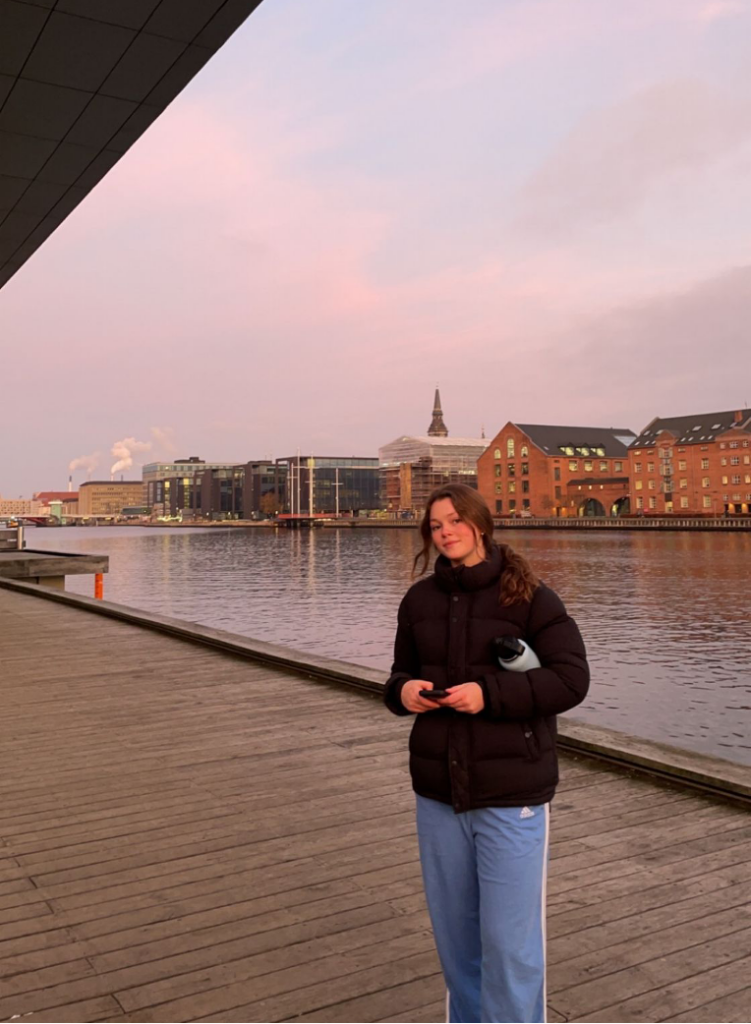Coming out of Covid-19, studying abroad seemed like a no-brainer to me; the opportunity to interact with as many new people as possible in a novel environment seemed like the perfect way to distance myself from the struggles of recent years. In many ways, I assumed it would be a sort of vacation (as I think many students do), but that was all put into perspective within the first two weeks.
I’m currently studying abroad in Copenhagen, Denmark with DIS (the Danish Institute for Study Abroad). What drew me to Copenhagen was all the talk about the degree of happiness and the quality of life in Denmark; it contrasted so starkly with our way of life in the U.S. and I hoped to experience that lifestyle. While I’ve found Copenhagen to be a lovely place to live, there are a few things those descriptions certainly don’t prepare you for.

For one, the cost of living in Copenhagen is extremely high – both groceries and restaurants (even just for a sandwich) are shockingly pricey. I’m used to relying on my financial aid and meal plan to get through the semester at Wesleyan, and while DIS provides students with a $600 grocery stipend, they acknowledge that this is not enough to eat for the full semester. Thus, students are expected to pay for food out of pocket for part of the term. While this is doable with budgeting, it certainly won’t provide you with the constant stream of aesthetic restaurants and instagram-worthy experiences that are often presented as the norm when studying abroad. I would recommend learning some basic cooking skills and nailing down a few comfortable recipes. The first grocery trip will be a humbling experience no matter how much you try to prepare, so just bring the google translate app and do your best.
Another aspect of Copenhagen that I was not prepared for, despite having read about it, was the darkness. Some may complain about the cold in Denmark, but frankly the coldest days in Copenhagen haven’t held a candle to Boston or Middletown’s winters. So, what is difficult isn’t the cold, but instead the lack of sunlight. For my first two months (late January-early March) the sun rose very late, and set very early, and the days were typically gray. However, while the weather may appear inescapable, the Danes know how to handle this time of year – they specialize in hygge (a term that roughly translates coziness), which brings beautiful warm lighting, cozy cafe culture, and ample time in the sauna. On the bright side (haha) the spring semester has an upwards trajectory weather-wise in comparison with the fall semester’s decline into darkness, and the sun has recently brought people flocking to the squares to eat hotdogs and jump in the harbor.

All of this being said, Copenhagen has been really good to me, and I am having an amazing time at DIS. The class sizes and quality are similar to Wesleyan, and I’m able to take some courses that I’ve never seen offered at Wes before, like a class about the history of conspiracy theories and one about soccer, politics, and society. I’ve been lucky to meet some great people who have made this place feel like home, and while I never would’ve envisioned myself living in Denmark for 5 months, there is nothing I would change if I could go back and choose again. Being away from home and school has given me a chance to personally reflect and gain perspective on my own life in ways I never have before, and pushed me outside of my comfort zone in innumerable ways.
I think my final piece of advice if you are considering a semester abroad in Copenhagen is to do everything you can to embrace experiences that may feel unnatural at first – ride the bike, buy the yogurt that comes in a milk carton, jump into the freezing cold harbor, and try all the varieties of smørrebrød that abound in Danish cafes. Ironically, you will likely feel most at home just when it’s time to leave.
Serena Sink, Class of 2024, ssink@wesleyan.edu


